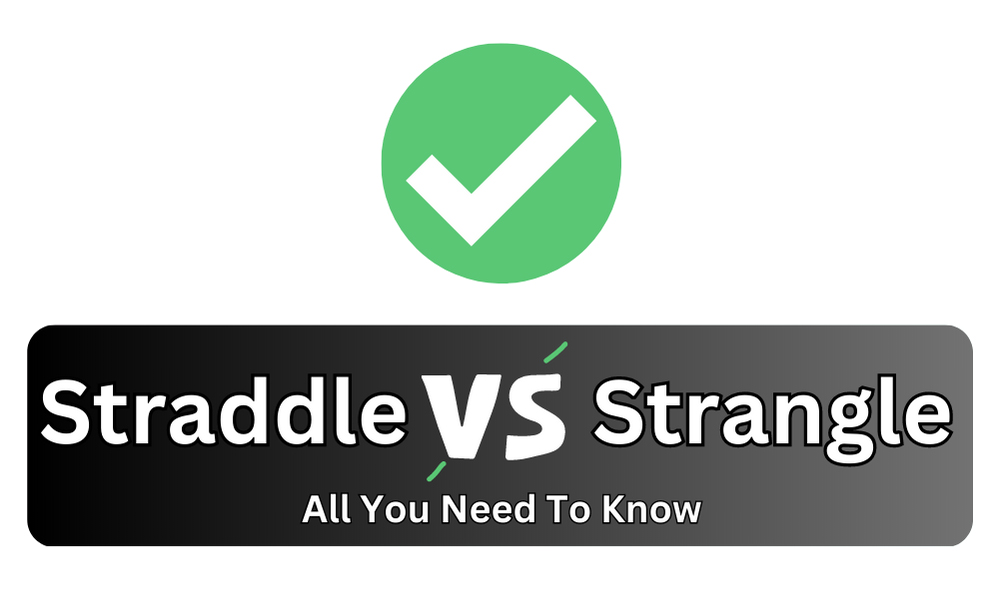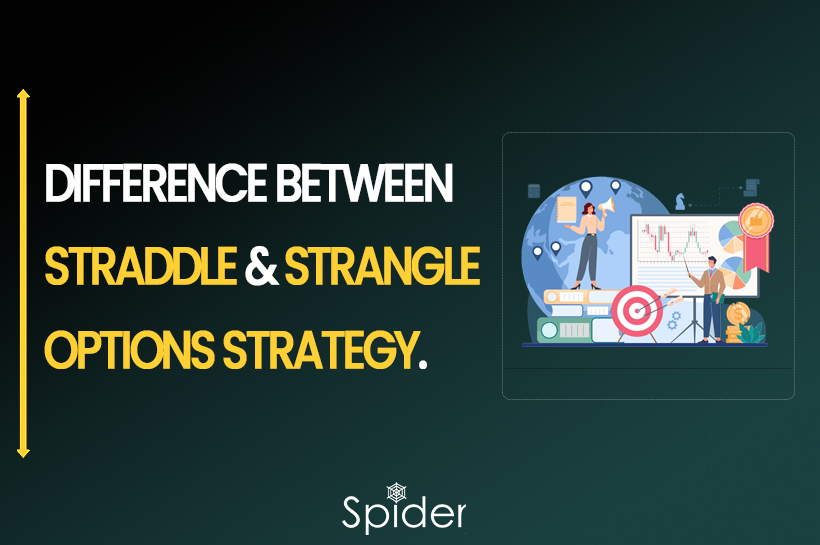Straddle and Strangle Options Strategies involve buying or selling call and put options simultaneously, making them popular among traders to benefit from market volatility and capitalize on sudden price movements.
What is Straddle & Strangle Options Strategy?

The long straddle and options strangle are two popular strategies used to profit from significant price movements in a stock. While both involve buying call and put options on the same security with the same expiration date, they differ in the required price movement and the cost of implementation.
Long straddles are usually more expensive to implement, but they require less price movement before generating a profit, while strangles require more movement to earn a profit. On the other hand, short straddles and strangles can be used to benefit from steady prices.
What is the Difference Between Straddles and Strangles?

Straddles and strangles are two common options trading strategies used by traders to profit from market volatility. The main difference between the two lies in the strike price of the options involved.
A straddle strategy includes buying both call and put options on the same security with the same expiration date and strike price. In contrast, a strangle strategy is the same as the straddle strategy but here when buying call and put options on the same security having the same expiry, the strike price will be different.
While both strategies allow traders to benefit from significant price movements in stock, the straddle strategy, is more expensive but requires less price movement to earn a profit, the strangle strategy, however, is cheaper to implement and requires a higher price movement to generate a profit.
Traders use these strategies to hedge their positions or capitalize on sudden price fluctuations. It’s important to note that both strategies have their risks and rewards, and traders should consider their individual goals and risk tolerance before implementing either strategy.
Also, when prices change a lot, long straddles and strangles help traders make a profit, while short straddles and strangles can earn money when prices stay steady or don’t change much. However, all of these strategies have some level of risk.
Main Factors to Consider when using Straddles and Strangles
- Market volatility levels
- Cost of implementation
- Expiration date of the options
- Price movement required for profitability
- Overall risk-reward profile
- Alignment with trading objectives and risk tolerance
Example of Straddles and Strangles Strike Prices
Here’s an example to help illustrate the role of the strike price in straddle and strangle options strategies:
Let’s say a trader believes that the price of an ABC stock will experience significant volatility in the coming weeks. The trader decides to use a straddle strategy and buys a call option and a put option on ABC stock, with a strike price of ₹500 and an expiration date of one month from now.
If the price of an ABC stock rises above ₹500, the trader can exercise the call option to buy the stock at the lower strike price and then sell it at the higher market price, earning a profit. Similarly, if the price of the stock falls below ₹500, the trader can exercise the put option to sell the stock at the higher strike price and then buy it back at the lower market price, also earning a profit.
Now, when it comes to strangle strategy. The trader buys a call option with a strike price of ₹550 and a put option with a strike price of ₹545, both expiring in one month. If the price of an ABC stock rises above ₹550, the trader can exercise the call option to buy the stock at the lower strike price and sell it at the higher market price. If the price falls below ₹545, the trader can exercise the put option to sell the stock at the higher strike price and buy it back at the lower market price.
Implementation Cost
Typically, implementing straddles requires a higher cost compared to strangles as it involves purchasing at-the-money options, where the strike price is the same as the price of the underlying stock. This is because at-the-money options are generally more expensive than options with different strike prices, which are used in strangle strategies.
Which one to choose?
Both straddles and strangles are usually considered to be independent of stock price movement direction. Instead, they focus only on the stock price magnitude changes, or lack thereof. However, by purchasing or selling options at different strike prices, strangles allow traders to add directional bias if they believe the stock is more likely to move in a particular direction.
For instance, if a stock is trading at ₹500 and a trader believes it is more likely to increase in value than to decrease, they could buy a call with a ₹550 strike price and buy a put with a ₹442 strike price. In this scenario, the trader will earn more from a rise in the stock’s price than from a drop in the stock’s price of the same magnitude.
Risk Involve
Long straddle and strangle strategies involve the risk of the options expiring worthless if the stock price doesn’t move significantly.
Short straddle and strangle strategies have an unlimited risk, where the trader could face significant losses if the stock price moves sharply.
This is because they are selling options that give the buyer the right to buy or sell the stock at a specific price.
Short strangles have less risk than short straddles as the strike prices are further apart, but they still carry significant risk, especially in volatile markets or unpredictable stocks.
Key Takeaways
- Straddles and strangles are option strategies that involve buying or selling call and put options on the same stock with different strike prices and expiration dates.
- Straddles are more expensive to implement than strangles because they involve buying at-the-money options.
- Both strategies are direction neutral, meaning they do not depend on which way the stock prices move, but only on the magnitude of changes in stock price or the lack thereof.
- Strangles can be used with directional bias by buying or selling options with different strike prices.
- The risk in long straddle and strangle strategies is primarily the cost of the options themselves, while the risk in short straddle and strangle strategies is unlimited.
Also, check out our Blog on Importance of Stop-loss in Options Trading
Join our upcoming Master-Class on Options Trading Strategy with Implied Volatility.
Disclaimer: The information provided in this Blog is for educational purposes only and should not be construed as financial advice. Trading in the stock market involves a significant level of risk and can result in both profits and losses. Spider Software & Team does not guarantee any specific outcome or profit from the use of the information provided in this Blog. It is the sole responsibility of the viewer to evaluate their own financial situation and to make their own decisions regarding any investments or trading strategies based on their individual financial goals, risk tolerance, and investment objectives. Spider Software & Team shall not be liable for any loss or damage, including without limitation any indirect, special, incidental or consequential loss or damage, arising from or in connection with the use of this blog or any information contained herein.






